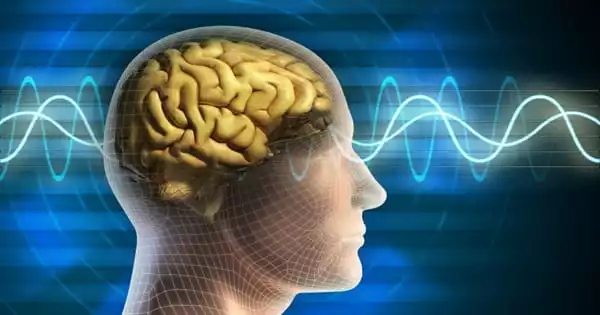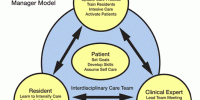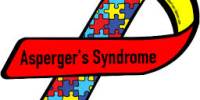Scientists investigated a technology known as ‘neurofeedback,’ which allows ADHD patients to train their attention based on instant feedback from their brain activity. The team of neuroscientists discovered that not only did the training increase patients’ concentration abilities but that the improvement was also strongly linked to an amplified response from the brain — the P3 wave — which is known to reflect information integration in the brain.
Attention Deficit Hyperactivity Disorder (ADHD) affects approximately 7% of children, with a two-in-three probability of lasting into adulthood. This neurodevelopmental disease is distinguished by difficulties with concentration, increased distractibility, impulsivity, and hyperactivity. ADHD is now treated with prescription medicines, which can have negative side effects. This is why researchers from the University of Geneva (UNIGE) and the University Hospitals of Geneva (HUG) in Switzerland investigated a novel approach known as ‘neurofeedback,’ which allows ADHD patients to train their attention using instant feedback from the level of their brain activity.
The team of neuroscientists discovered that not only did the training improve patients’ concentration abilities, but that the improvement was also closely linked to an improved response from the brain—the P3 wave—which is known to reflect information integration in the brain, with higher P3 amplitudes indicating greater attention towards detected targets. The findings are freely available and have been published in the journal Clinical Neurophysiology.
Attention Deficit Hyperactivity Disorder (ADHD) emerges in childhood and causes a slew of problems with attention, focus, and impulsive behavior. It involves both genetic and environmental causes and is distinguished by a lack of dopamine, a neurotransmitter involved in executive functioning. “These disorders persist for the most part into adulthood and cause problems in relational and socio-professional functioning, making it easier for people with this disorder to turn to alcohol or drugs,” says Marie-Pierre Deiber, a researcher at the UNIGE Faculty of Medicine’s Department of Psychiatry and the HUG Division of Psychiatric Specialties.
The goal of neurofeedback is to make patients aware of when they are no longer paying attention. Through neuroplasticity, brain networks “learn” to lessen attentional lapses with practice.
Tomas Ros
ADHD is now treated with drugs that boost dopamine levels, which improves the patient’s attention. Because the disease is frequently accompanied with sadness, anxiety, or even bipolar disorder, treatment is usually a combination of medication and psychotherapy.
“However, pharmaceutical treatments can be associated with significant side effects, such as nervousness and sleep disruption, as well as an increased risk of developing other psychiatric disorders or cardiovascular diseases,” explains Roland Hasler, a researcher in the HUG Division of Psychiatric Specialties. “This is why we decided to look into a completely non-pharmacological and non-invasive treatment based on the ‘neurofeedback’ idea.”
Sending the brain its own signals
Neurofeedback is a sort of neurocognitive intervention that focuses on teaching “real-time” brain impulses. The scientists capture the electrical activity of cortical neurons using an electroencephalogram (EEG) with 64 sensors and focus their analysis on the spontaneous Alpha rhythm (with a frequency of around 10 Hertz), coupling its amplitude fluctuation to a video game that the patients can control with the power of their attention. “The goal of neurofeedback is to make patients aware of when they are no longer paying attention. Through neuroplasticity, brain networks “learn” to lessen attentional lapses with practice “explains Tomas Ros, a researcher at the UNIGE Faculty of Medicine’s Department of Basic Neurosciences and the Centre for Biomedical Imaging (CIBM).

The patient’s EEG is linked to a computer that displays an image of a space shuttle to accomplish this. The space shuttle moves ahead while the patient is in an attentive mental state (low Alpha rhythm). However, as soon as the patient is distracted or loses focus (high Alpha rhythm), the space-shuttle movement comes to a halt. When the space shuttle comes to a halt, the patient recognizes that he or she was no longer paying attention and refocuses to restart the spacecraft.
Training the brain to focus without medication?
The Geneva team administered an attention test to 25 persons with ADHD and 22 neurotypical adults to assess the impact of neurofeedback training. The findings revealed that, at baseline, ADHD patients produced more errors and had a more variable reaction time than control participants, which is consistent with an indication of decreased attention. The subjects took the attention test again after 30 minutes of neurofeedback training.
“The initial observation was that stimulus detection and response variability improved, indicating attentional augmentation,” Marie-Pierre Deiber explains. “However, what piqued our curiosity the most was the effect of neurofeedback training on the P3 component, which has previously been demonstrated to be diminished in ADHD and is directly linked to the neurocognitive processing of the stimuli.”
The greater the amplitude of the P3, the more effective the sensory processing and the more accurate the response to the attention challenge. “The amplitude of the P3 increased dramatically following neurofeedback training and was closely related to a reduction in the number of errors committed by the patients,” says Tomas Ros.
This study first demonstrates that a single 30-minute session of neurofeedback can cause short-term plasticity in the brain and increase attention in ADHD patients. Second, it lends credence to the presence of an electrophysiological marker of attentional processing in ADHD.
“As a result, the P3 could be a brain signature that allows us to better understand the neurocognitive mechanisms of ADHD,” says Nader Perroud, professor in the Department of Psychiatry at the UNIGE Faculty of Medicine and the HUG Division of Psychiatric Specialties.
Finally, because the results are seen in the near term, the researchers intend to conduct a neurofeedback treatment based on several training sessions to see if the brain’s plasticity is enhanced over time. “The ultimate goal is for patients to be able to learn to concentrate without medication and train their brain in the comfort of their own home,” Tomas Ros concludes.
















